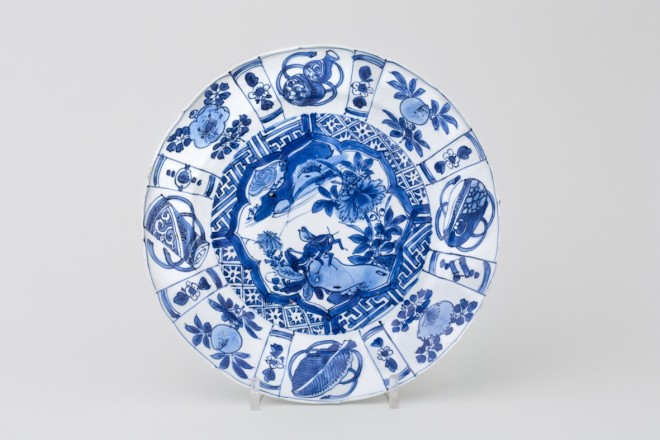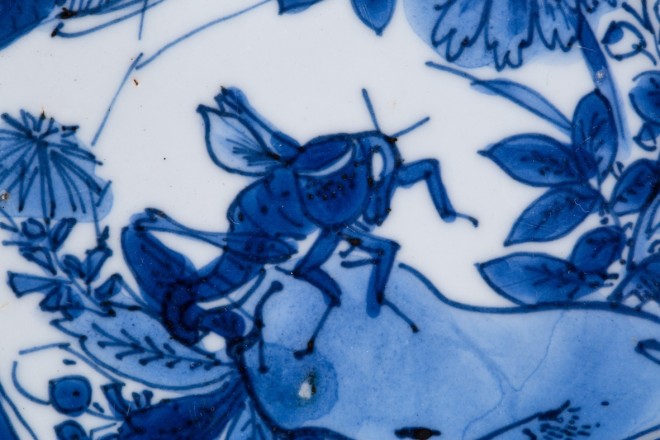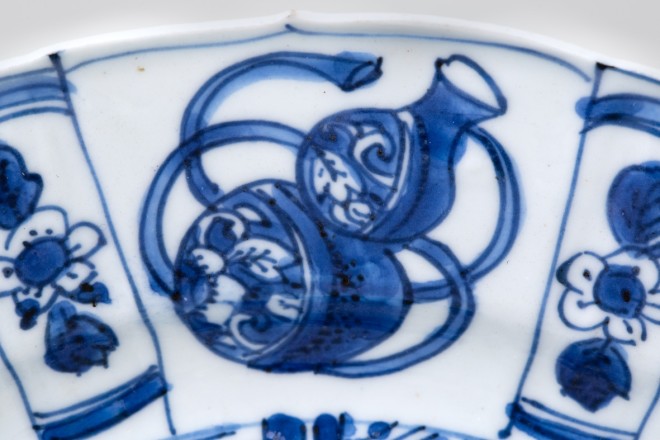BE98
Further images
Thinly potted, of round form with a shaped and moulded rim, decorated in shades of underglaze blue, the centre painted with a scene of a grasshopper balancing on a rock, its two front legs held up and its wings unfolded, standing beneath a single large peony bloom, all contained within a flower-shaped cartouche with eight petals and surrounded by four panels, two of diaper pattern and two of key-fret work; the wide, shallow rim is moulded to fit the pattern of eight wide panels divided by eight thin panels; the wide panels each contain an object, including peaches, a double gourd vase, a scroll, an Artemisia leaf, and a double gourd vase; the thin panels each contain a single small flower or a geometric symbol; the reverse is painted with eight wide panels divided by eight thin panels, the thin panels each with an elongated lingzhi fungus, each wide panel with a geometric design; the short foot encircled with two lines of underglaze blue, the base glazed.
Literature
Our dating is based on Maura Rinaldi Kraak Porcelain (1989, Bamboo Publishing) p.98, pl.85. The example published in Rinaldi is dated 1595-1610. It has the same moulding to the body and a similar panelled pattern on the reverse. The front has a central cartouche of a similar shape to ours, again surrounded by diaper pattern. The front rim, like ours, has a pattern of eight wide panels divided by eight narrow ones.
In the Victoria and Albert museum, there is a Safavid plate made in the Kraak style (museum number 2782-1876), dating to the 17th century. Like our Chinese plate, the Safavid Kraak-style plate also has a grasshopper under a large flower as the central decoration, albeit in mirror image. Safavid potters were highly enamoured with Kraak-ware from China, and sought to emulate its striking style by copying pieces that came to Iran. It is highly possible that a plate very similar to ours was used as the basis for the Safavid version held in the V&A.
A comparable Chinese version, also with a grasshopper, may be found in the Groninger Museum (museum number 1938.0610).






